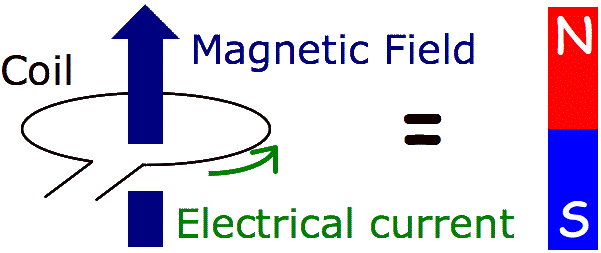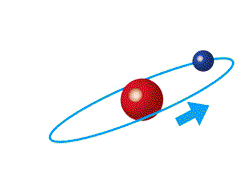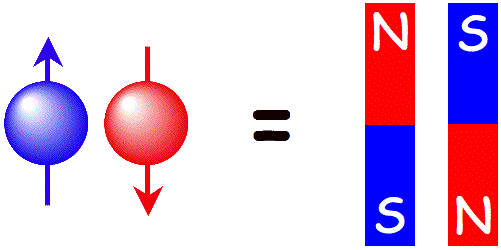最終更新日:2025年3月28日
Last updated: 28/03/2025
初学者向けスピントロニクス
Spintronics for Kids!
 私たちの生活は磁石に支えられています. 例えば、ちょっとしたメモを貼るための冷蔵庫の磁石、モーターやスピーカー、スマートホンをバックアップするためのクラウドサーバー、さらにはスマートホンのセンサーなどに幅広く使われています. 皆さん御存知の通り、磁石は鉄・コバルト・ニッケルなどの強磁性体と呼ばれる材料に引き寄せられます. この力は円形コイルに流れる電流が作る磁場に依るものです. 右図のように円電流が流れると、磁石のように振る舞うのです.
We have been using magnets all over the places, such as on your fridge, in a moter and a speaker, in a hard disc drive for backing up your data, and even in your mobile phone! As you know, the magnets attract some metals, Fe, Co and Ni (ferromagnetic metals) for example. The oigin of this force is due to a circular electrical current. When you flow a current in a circular cable as shown in the right figure, this coil behaves like a magnet.
私たちの生活は磁石に支えられています. 例えば、ちょっとしたメモを貼るための冷蔵庫の磁石、モーターやスピーカー、スマートホンをバックアップするためのクラウドサーバー、さらにはスマートホンのセンサーなどに幅広く使われています. 皆さん御存知の通り、磁石は鉄・コバルト・ニッケルなどの強磁性体と呼ばれる材料に引き寄せられます. この力は円形コイルに流れる電流が作る磁場に依るものです. 右図のように円電流が流れると、磁石のように振る舞うのです.
We have been using magnets all over the places, such as on your fridge, in a moter and a speaker, in a hard disc drive for backing up your data, and even in your mobile phone! As you know, the magnets attract some metals, Fe, Co and Ni (ferromagnetic metals) for example. The oigin of this force is due to a circular electrical current. When you flow a current in a circular cable as shown in the right figure, this coil behaves like a magnet.
 原子の大きさでは、円電流と同じように電子が回転しながら原子核の周りを回っている(太陽の周りを回り(公転)ながら自転する地球のようです)ので、左図のように磁石として扱うことができます. これが磁石のもとで、最近流行りの量子力学が室温で初めて調べられた現象です. この電子の持つ微小な磁石をスピンといい、右下図のように上向きと下向きに分けられます(皆さんの磁石のN極とS極のようなものです).
In an atomic scale, similarly, an electron, of which flow is an electrical current, revolves around an atom as well as rotates, showing a spin (see the left figure). This is the origin of the magnetism, which is the most old phenomena based on quantum physics in our history. The orientations of the spins are defined to be either up or down, corresponding to the N- or S-pole in a magnet (right bottom figure).
原子の大きさでは、円電流と同じように電子が回転しながら原子核の周りを回っている(太陽の周りを回り(公転)ながら自転する地球のようです)ので、左図のように磁石として扱うことができます. これが磁石のもとで、最近流行りの量子力学が室温で初めて調べられた現象です. この電子の持つ微小な磁石をスピンといい、右下図のように上向きと下向きに分けられます(皆さんの磁石のN極とS極のようなものです).
In an atomic scale, similarly, an electron, of which flow is an electrical current, revolves around an atom as well as rotates, showing a spin (see the left figure). This is the origin of the magnetism, which is the most old phenomena based on quantum physics in our history. The orientations of the spins are defined to be either up or down, corresponding to the N- or S-pole in a magnet (right bottom figure).
 スピントロニクスでは、こうしたスピンを生み出して、その流れを操ることを目指しています.
In spintronics, we study on the flow of these spins to contol and engineer the spin polarisation, total population of both up and down spins.
スピントロニクスでは、こうしたスピンを生み出して、その流れを操ることを目指しています.
In spintronics, we study on the flow of these spins to contol and engineer the spin polarisation, total population of both up and down spins.








